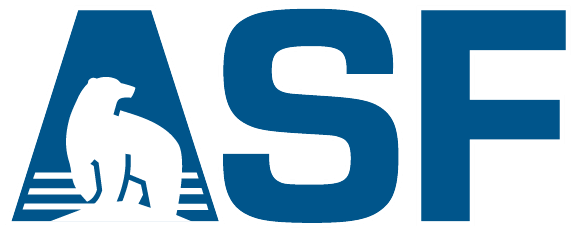This page lists some helpful open resources.
Resources Related to Computational Labs:
Students enrolled on the verified track will get the chance to interact with SAR data in computational labs. These labs will be conducted in the framework of Jupyter Notebooks, which is an open-source web application that allows you to create and share documents that contain live code, equations, visualizations and narrative text. Look at the following resources to learn a bit more about the concept of Jupyter Notebooks and the basics of Python:

OpenEdX Course BYU-Hydro 201: Introduction to Python: This free short course is offered by the fantastic BYU Hydroinformatics Lab and introduces computer programming languages, provides resources to get comfortable using python, and shows how to manage code using packages and virtual environments.

OpenEdX Course BYU-Hydro 202: Jupyter Notebook: Also offered by the BYU Hydroinformatics Lab, this short course shows how to create Jupyter Notebooks and also includes a brief introduction to Google Colaboratory and CUAHSI Hydroshare.

Instructions on "How to Run a Jupyter Notebook": Put together by the NASA Alaska Satellite Facility, this short tutorial provides you with information on how to interact with Jupyter notebooks to exercise computational labs.
Open Training Resources :
SAR is an exciting and rapidly growing field and more and more open educational resources are coming online every day. Here is a selection of resources that we find useful and may be helpful in addition to the material provided in this course.

The SERVIR SAR Handbook: The "SAR Handbook: Comprehensive Methodologies for Forest Monitoring and Biomass Estimation" is a free educational resource created in a collaboration between NASA SERVIR and SilvaCarbon. We will reference some of the SAR Handbook during early phases of this course. Download the book for free here.

SAR Class on Microwave Remote Sensing (https://radar.community.uaf.edu/): Every odd Spring, the instructor of this course is teaching a synchronous-remote full-semester graduate-level class on Microwave Remote Sensing at the University of Alaska Fairbanks. The course provides extensive information on the principles and applications of radar in lectures and labs. The class website makes all materials available for free including recordings on the 2019 installment of the class.

The SAR Capacity Building Center (SAR-CBC): The instructor of this edX class is the PI of the SAR Capacity Building Center, a NASA-funded project aimed at the development of educational materials in the field of SAR. The SAR-CBC website (https://learnsar.open.uaf.edu/) provides access to free-and-open resources and information about past and upcoming training activities.

The Alaska Satellite Facility's SAR Data Recipe Archive: This page is an initiative of the Alaska Satellite Facility to provide SAR data analysis support for researchers with little SAR expertise. It hosts a number of step-by-step data recipes describing how to use SAR data for a variety of applications.

The NASA Applied Remote Sensing Training (ARSET) Program: The ARSET Program offers satellite remote sensing training that builds the skills to integrate NASA Earth Science data into an agency’s decision-making activities. Many trainings are available in English and Spanish language. The availability of SAR-related trainings and webinars is constantly increasing.

EO College (https://eo-college.org/): EO College is an Earth observation initiative developed by the Friedrich-Schiller University in Jena, Germany. It makes regular Massive Open Online Courses (MOOCs) as well as other free educational resources in Radar Remote Sensing available through its website. While past trainings focused on SAR, courses in other remote sensing modalities are expected in the near future.

RUS Training: The main objectives of the RUS (Research and User Support for Sentinel Core products) Service are to promote the uptake of Copernicus data (such as data from the ESA Sentinel missions) and to support the scaling up of R&D activities with Copernicus data. RUS holds in person trainings but also provides access to online resources on SAR and other remote sensing technologies.
The NASA/ISRO SAR (NISAR) Mission:
Using advanced radar imaging that will provide an unprecedented, detailed view of Earth, the NASA-ISRO Synthetic Aperture Radar, or NISAR, satellite is designed to observe and take measurements of some of the planet’s most complex processes, including ecosystem disturbances, ice-sheet collapse, and natural hazards such as earthquakes, tsunamis, volcanoes and landslides.
Data collected from NISAR will reveal information about the evolution and state of Earth’s crust, help scientists better understand our planet’s processes and changing climate, and aid future resource and hazard management. The mission is a partnership between NASA and the Indian Space Research Organization.
To Learn More about NISAR, please visit https://nisar.jpl.nasa.gov/.
Software Resources:


There is a growing amount of free-and-open SAR processing tools becoming available. Here, a selection of the most relevant tools:
- European Space Agency's SNAP software
- Jet Propulsion Laboratory's ISCE2 and ISCE3 RTC and GTC tools
- RadarCODE - curated list of awesome SAR software, libraries, and resources
InSAR Online Products:
At the very end, here is a list of portals providing value-added products from SAR. These products are ready for application in hazard analysis.
- UAF's SARVIEWS - Online InSAR product for viewing interferograms
- COMET-LiCS Sentinel-1 InSAR
- JPL's ARIA processing system
- The InSAR Norway service